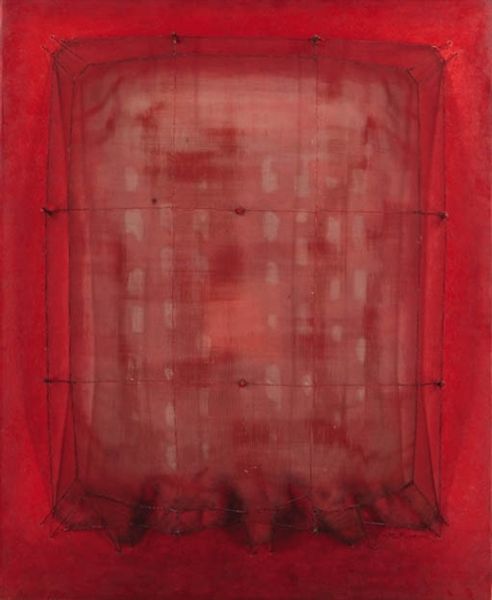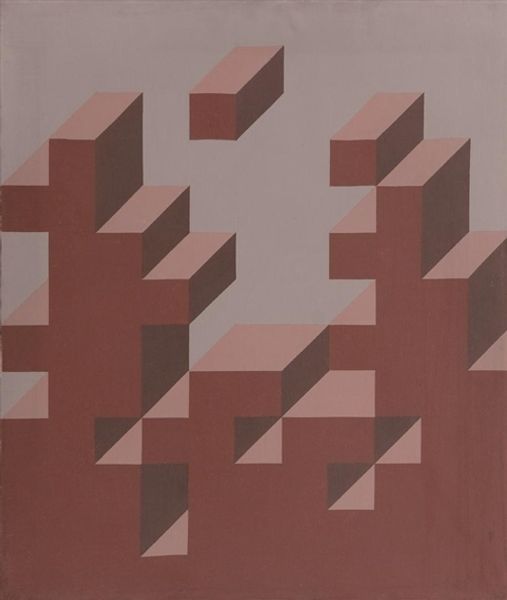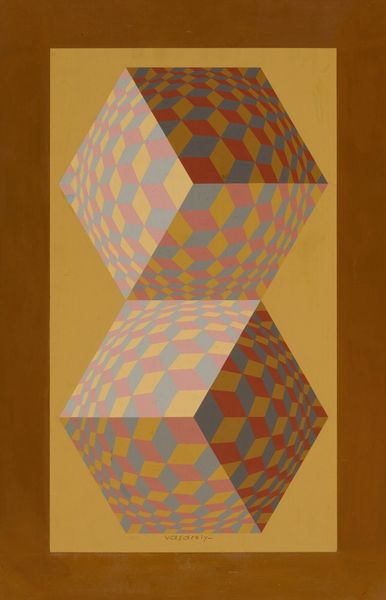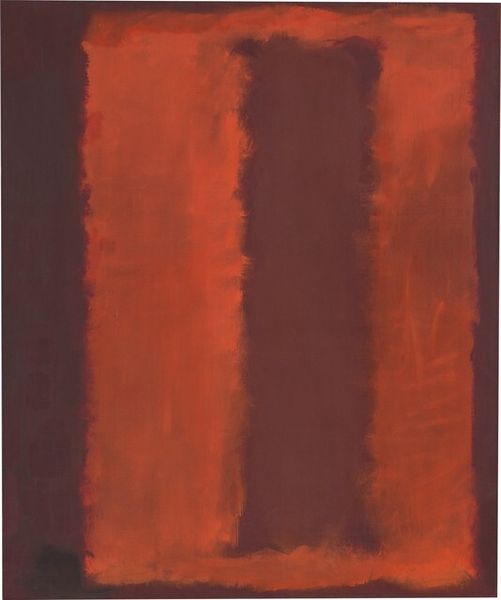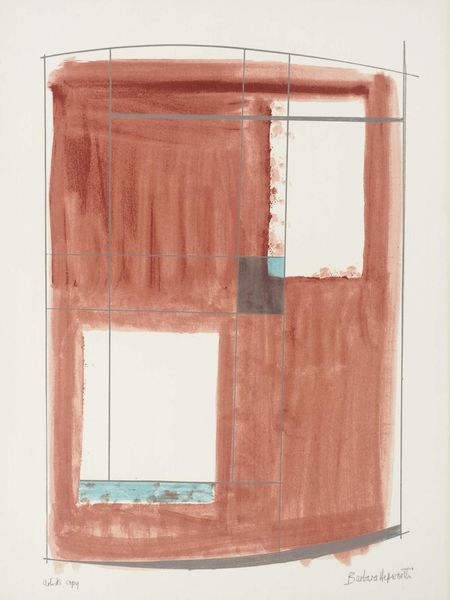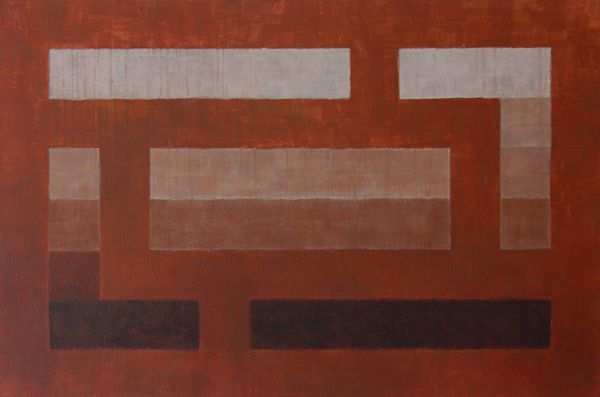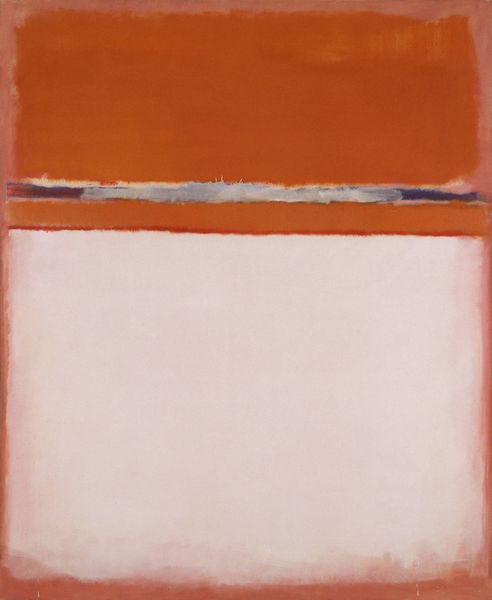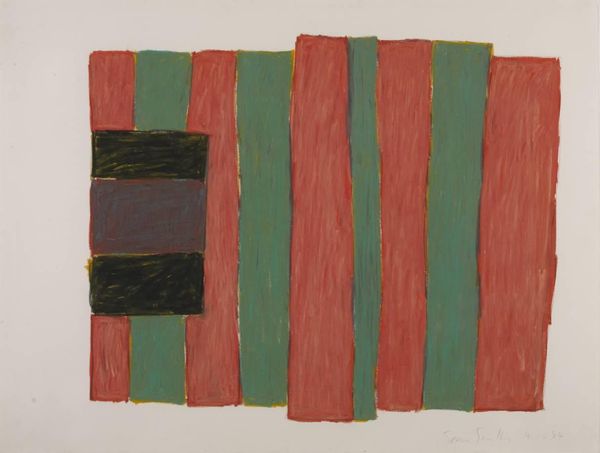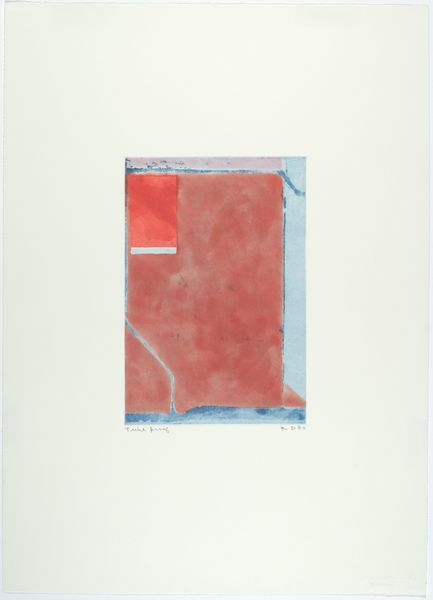
painting, acrylic-paint
#
natural stone pattern
#
contemporary
#
painting
#
acrylic-paint
#
geometric pattern
#
abstract pattern
#
minimal pattern
#
organic pattern
#
simple pattern
#
repetition of pattern
#
vertical pattern
#
pattern repetition
#
layered pattern
Copyright: Modern Artists: Artvee
Curator: Today, we’re considering “Facets; Screen Wall,” a mixed-media piece crafted in 2016 by Njideka Akunyili Crosby. Editor: It strikes me as both rigid and playful. That intense repetition of circular forms layered within that muted red… it’s almost hypnotic. Curator: The screen itself is very interesting. We're presented with layered patterns creating optical depth within the depicted architecture. Note how she is integrating photographic imagery transferred directly onto the painting surface. This blend is central to her exploration. Editor: Absolutely, and its location seems pivotal. Think of traditional screens, acting as filters. What sociopolitical screens, constructed to either include or exclude people, does the work engage with? Curator: Precisely. Her use of mixed media challenges conventions in art history by interweaving painting with photography, hinting at the complexities of memory, displacement, and cultural identity. This visual layering encourages reflection on personal experiences. Editor: This emphasis on barriers echoes within global political rhetoric as much as it addresses personal struggles, wouldn’t you agree? It is the institutionalized boundaries, but also intimate ones, she tackles. The geometric patterns offer the guise of formal calm while subverting our expectations. Curator: Indeed. By combining abstraction with the personal, Akunyili Crosby's practice makes space for reflection upon not just cultural boundaries, but those intrinsic formal components as well, and to engage in the artistic conventions by which they manifest in turn. The semiotics embedded within repetition become critical to any viewer willing to decipher such an artwork. Editor: Agreed. The very concept of seeing, of filtering reality, seems crucial here. So what, finally, does this synthesis of aesthetic choices reveal? Is it a new, complicated pattern, a reflection? Curator: Ultimately, this piece invites us to analyze her integration of patterns as structural markers, encouraging new perspectives on abstraction and the visual culture that constantly conditions how we interact with each other. Editor: Leaving us to rethink where these very patterns originate—who builds and benefits from these screens, so to speak.
Comments
No comments
Be the first to comment and join the conversation on the ultimate creative platform.
